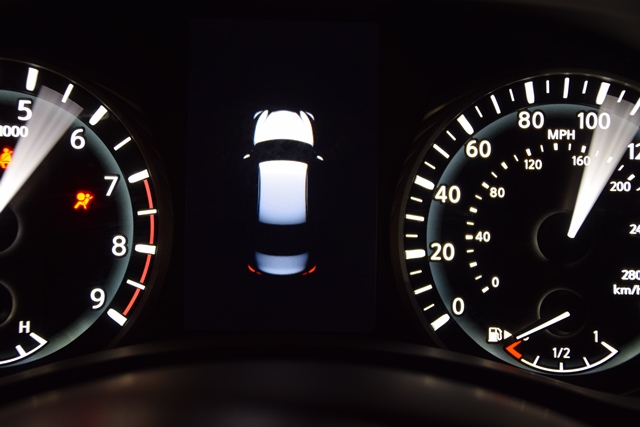With the growth of turbo 4-cyl. engines in recent years, the future of the one-time ubiquitous high-feature V-6 had come into question. But the 3.0L twin-turbo VR V-6 in the Infiniti Q50 sedan and Q60 coupe confirms these silky smooth powerplants will be around for years to come.
At 400 hp and 350 lb.-ft. (475 Nm) of torque, as tested, the returning winner is a delight for driving enthusiasts: it knocks out zero-to-60 mph (97 km/h) in less than five seconds, never seems at a loss for extra punch at highway speeds and its responsive throttle repeatedly brought out the mischievous child in WardsAuto judges.
“Nice punch delivered by the twin turbos,” says WardsAuto editor Dave Zoia.
Editor Jim Irwin adds: “All the power you’d expect from a turbo-6. German-like in its ability to hit 85 mph (137 (km/h) before you know it.”
But it’s a sophisticated brute, too, with gasoline direct injection, electrically variable-valve timing and an electrically variable-displacement oil pump. It uses the latest friction-reducing technologies and a weight-saving, heat-reducing exhaust manifold design within the cylinder heads. Employing two turbos instead of one, lag is a veritable no-show.

“This is Infiniti’s standout characteristic: Silky smooth power and EV-like silent torque without the whining,” says editor Drew Winter.
Like those wildly popular boosted 4-cyl. units, the 3.0L VR V-6 also is an exercise in downsizing. Developed exclusively for Nissan’s premium Infiniti brand, it fits where the Japanese automaker’s outstanding but larger 3.7L VQ V-6 (a multiple Ward’s 10 Best Engines winner) would likely be employed otherwise. The result was fuel economy topping 23 mpg (9.8 L/100 km) during testing, which is quite a feat for an engine that begs to run freely.
The VR V-6 was built with an eye on the future, too. Nissan engineers say the engine architecture is flexible enough to accommodate emerging technologies to meet rising fuel-economy and tailpipe-emissions standards.
But as it stands today, the VR 3.0L demonstrates the high-feature V-6 definitely is here to stay and may only get better with age.



